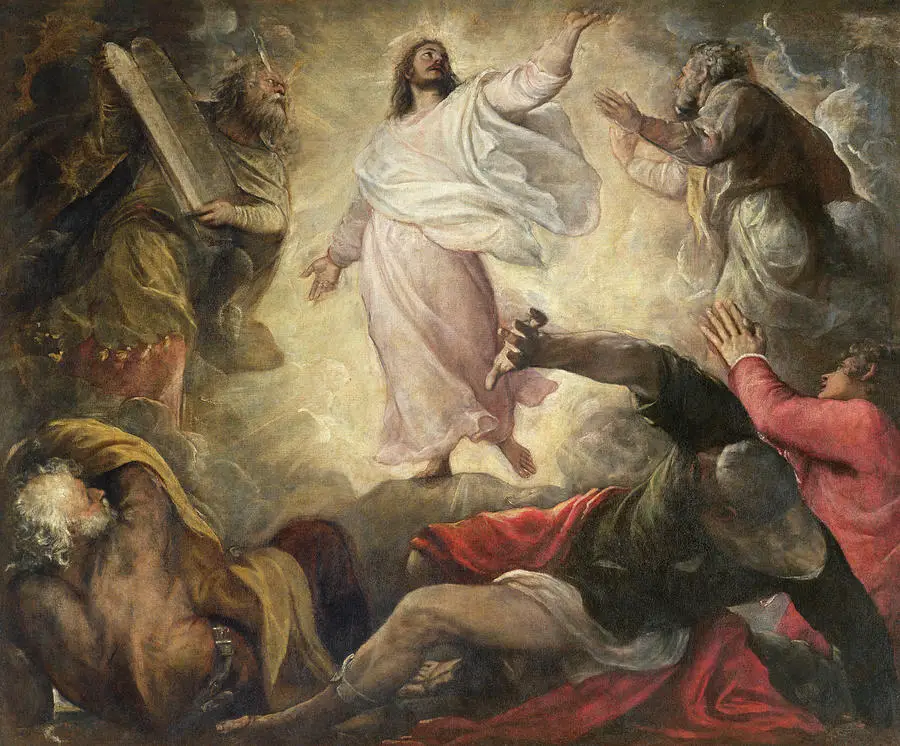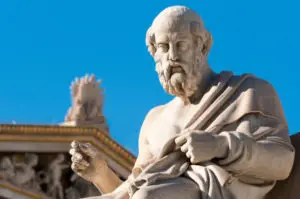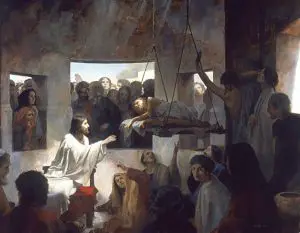The transfiguration of Jesus on Mt. Hermon[1] is considered by some Christians to be proof of his deity, despite the fact that the text does not claim as much. If it is indeed proof, we can expect that this type of transformation would be exclusive to Jesus since fourth century Church Fathers claim he is the unique God-Man.
A proper examination of the event in question must include the revelation given just days before. In Matthew 16, Jesus asked his disciples, “Who do people say that the Son of Man is?” The Son of Man was a title synonymous with that of Christ or Messiah and was a reference to the coming king. When Jesus redirected his question to ask, “But who do you say that I am?” Peter answered, “You are the Christ, the Son of the living God.”[2] Jesus declared Peter blessed because it was God the Father who had revealed it to him and not man. Afterwards, Jesus instructed them to “tell no one that he was the Christ.”[3] Thus, the revelation from God, which Jesus confirmed, was that he was the Christ, not that he was deity.
About a week later, Jesus selected three of his closet disciples to witness an extraordinary event:
Matthew 17:2-9 (NASB) Six days later Jesus *took with Him Peter and James and John his brother, and *led them up on a high mountain by themselves. 2 And He was transfigured before them; and His face shone like the sun, and His garments became as white as light. 3 And behold, Moses and Elijah appeared to them, talking with Him. 4 Peter said to Jesus, “Lord, it is good for us to be here; if You wish, I will make three tabernacles here, one for You, and one for Moses, and one for Elijah.” 5 While he was still speaking, a bright cloud overshadowed them, and behold, a voice out of the cloud said, “This is My beloved Son, with whom I am well-pleased; listen to Him!” 6 When the disciples heard this, they fell face down to the ground and were terrified. 7 And Jesus came to them and touched them and said, “Get up, and do not be afraid.” 8 And lifting up their eyes, they saw no one except Jesus Himself alone. 9 As they were coming down from the mountain, Jesus commanded them, saying, “Tell the vision to no one until the Son of Man has risen from the dead.” (emphasis added)
What does the word “transfigured” mean?
The word “transfigured” is the Greek word metamorphoo, and according to Thayer’s Greek Lexicon, it means: to change into another form; to transfigure, transform.[4] Some Christians believe that Jesus’ shining face and glowing garments prove he is God. If this is true, we would expect him to be the only person to have experienced this type of transformation. However, Scripture vividly records such a phenomenon occurring to people other than Jesus. For example, when Moses spent time in God’s presence on Mt. Sinai, he was transformed:
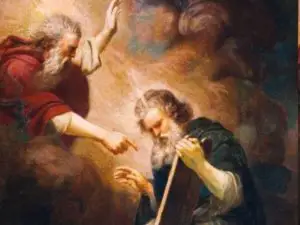 Exodus 34:29-35 (NASB) It came about when Moses was coming down from Mount Sinai (and the two tablets of the testimony were in Moses’ hand as he was coming down from the mountain), that Moses did not know that the skin of his face shone because of his speaking with Him. (emphasis added)
Exodus 34:29-35 (NASB) It came about when Moses was coming down from Mount Sinai (and the two tablets of the testimony were in Moses’ hand as he was coming down from the mountain), that Moses did not know that the skin of his face shone because of his speaking with Him. (emphasis added)
Moses’ shining face was so glorious that his brother, Aaron, and all of Israel were unable to look intently at his face. Moreover, they were afraid to come near him.[5] So whenever Moses came from being in God’s presence, he would wear a veil over his face:
Exodus 34:34-35: (NASB) But whenever Moses went in before the LORD to speak with Him, he would take off the veil until he came out; and whenever he came out and spoke to the sons of Israel what he had been commanded, 35 the sons of Israel would see the face of Moses, that the skin of Moses’ face shone. So Moses would replace the veil over his face until he went in to speak with Him. (emphasis added)
Jesus’ transformation on earth occurred only once, but Moses’ transformation was ongoing.
 Mt. Sinai isn’t the only mountain top where Moses appeared transformed. Luke records that in addition to Jesus, Moses and Elijah themselves appeared in “glory.” [6]
Mt. Sinai isn’t the only mountain top where Moses appeared transformed. Luke records that in addition to Jesus, Moses and Elijah themselves appeared in “glory.” [6]
Luke 9:30-31 (NASB) And behold, two men were talking with Him; and they were Moses and Elijah, 31 who, appearing in glory, were speaking of His departure which He was about to accomplish at Jerusalem. (emphasis added)
Another instance of someone’s appearance being transfigured is found in the book of Acts. When Stephen was on trial before the Sanhedrin for his testimony about Jesus, he was falsely accused of blasphemy. As Stephen mounted his defense, his face was transformed:
Acts 6:15 (NASB) And fixing their gaze on him, all who were sitting in the Council saw his face like the face of an angel. (emphasis added)
Benson’s Commentary on the New Testament explains what a “face like the face of an angel” means:
Covered with a supernatural lustre [sic], like that which appeared on the face of our Lord when he was transfigured, or at least that of Moses’s [sic] face, when he came down from the mount. Hereby God designed to put honour [sic] on his faithful witness, and confusion on his persecutors and judges, whose sin would be highly aggravated, and would indeed be rebellion against the visible glory of God, if, notwithstanding this, they proceeded against him.[7]
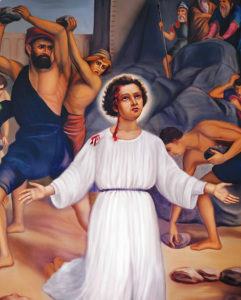 Such a glorious vision was, according to Benson, God’s way of honoring His faithful servant. But the transformation of saints is not relegated to those whose names appear in Scripture. Indeed, the apostle Paul wrote that Christians are being transformed into the same image of the Lord’s glory:
Such a glorious vision was, according to Benson, God’s way of honoring His faithful servant. But the transformation of saints is not relegated to those whose names appear in Scripture. Indeed, the apostle Paul wrote that Christians are being transformed into the same image of the Lord’s glory:
2 Corinthians 3:18 (NASB) But we all, with unveiled face, beholding as in a mirror the glory of the Lord, are being transformed into the same image from glory to glory, just as from the Lord, the Spirit. (emphasis added)
Here the word “transformed” is metamorphoo, the same Greek word used of Jesus on the mountain when he was as “transfigured” [8] Christians are being transformed or transfigured into the same image of glory as our Lord and Savior. Surely, no true Christian would argue that believers are deity.
The angel’s “appearance was like lightening and his clothes as white as snow.”
But what about Jesus’ garments which became white as light? Does that prove he is God? If shining garments are an indicator of deity, then we would have to include angels in the God-category. For example, when Mary came to the garden tomb to anoint Jesus’ body with oil, she found the tomb empty and two angels where Jesus’ body had been:
Luke 24:4-5 (NASB) While they were perplexed about this, behold, two men suddenly stood near them in dazzling clothing; 5 and as the women were terrified and bowed their faces to the ground, the men said to them, “Why do you seek the living One among the dead? (emphasis added)
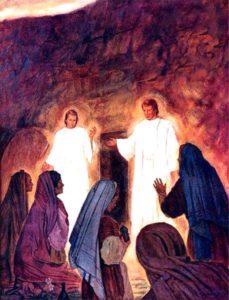 John clarifies in his account that these two “men” were “angels in white.”[9] Matthew’s account is more descriptive. He says the angel’s “appearance was like lightning and his clothing as white as snow” [10] (emphasis added). Obviously, angels, no matter how brilliant they appear, are not deity.
John clarifies in his account that these two “men” were “angels in white.”[9] Matthew’s account is more descriptive. He says the angel’s “appearance was like lightning and his clothing as white as snow” [10] (emphasis added). Obviously, angels, no matter how brilliant they appear, are not deity.
What about a response to such glory? Surely those in Jesus’ glorious presence that day on the mountain would have responded in worship or shown some measure of deference at such an incredible visual revelation. When the women at Jesus’ tomb in Luke 24:5 saw the dazzling angel, they were terrified and responded by bowing with their faces to the ground. Assuredly, if Jesus is God he would have elicited an equal if not more dramatic response. If glowing angels elicit homage, how much more a glowing God! But when Peter, James and John saw Jesus transformed before their eyes they did not bow in awe or fall silent as one would expect if Jesus’ deity was being revealed to them. Instead, we are told that Moses and Elijah were standing there talking to Jesus, not prostrate or seated at his feet, but standing with him.[11] And despite Jesus’ transfiguration, Peter saw no particular reason to give him greater honor than the other two prophets as evidenced by his suggestion to build tabernacles for each of them. Scholars say such a suggestion was because Peter saw them as being equal to the Lord.[12]
Matthew 17:2-4 (NASB) And He was transfigured before them; and His face shone like the sun, and His garments became as white as light. 3 And behold, Moses and Elijah appeared to them, talking with Him. 4 Peter said to Jesus, “Lord, it is good for us to be here; if You wish, I will make three tabernacles here, one for You, and one for Moses, and one for Elijah.” (emphasis added)
“When the disciples heard this, they fell face down to the ground and were terrified”
All three synoptic gospels record that the disciples were afraid or terrified[13] (just as Moses’ brother and all of the Israelites were when they saw him transfigured[14]). However, it was not until a cloud formed and God spoke from heaven that they fell face to the ground from terror:
Matthew 17:5-8 (NASB) While he [Peter] was still speaking, a bright cloud overshadowed them, and behold, a voice out of the cloud said, “This is My beloved Son, with whom I am well-pleased; listen to Him!” 6 When the disciples heard this, they fell face down to the ground and were terrified. 7 And Jesus came to them and touched them and said, “Get up, and do not be afraid.” 8 And lifting up their eyes, they saw no one except Jesus Himself alone. (emphasis added)
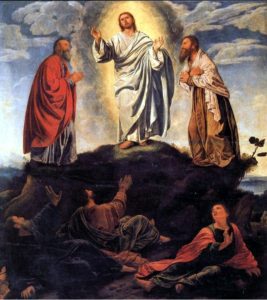 The only time the disciples bowed with their face to the ground was when God spoke. If Jesus’ transformation revealed his deity as some claim, then the disciples would have responded in like manner. But they didn’t.
The only time the disciples bowed with their face to the ground was when God spoke. If Jesus’ transformation revealed his deity as some claim, then the disciples would have responded in like manner. But they didn’t.
Jesus’ transfiguration would have been the perfect time for God to reveal that Jesus was also God. If He gave a “visual revelation,” then surely when He saw that the disciples didn’t “get it,” He would have given them a corresponding verbal one as well. But God did no such thing. Instead, He said Jesus was His beloved Son, which was not a new revelation,[15] but a profound reminder of the Messiah’s superiority to Moses and Elijah. Furthermore, it was in keeping with the revelation God had given the disciples through Peter’s confession just a week earlier: Jesus is the Christ, the son of the living God. Not that Jesus is God the Son, or the God-man or the 2nd person of the Trinity, but the one whom He sent to save the world.[16] Indeed, Peter, who was present at Christ’s transfiguration, recalled the encounter years later:
2 Peter 1:16-18 (NASB) For we did not follow cleverly devised tales when we made known to you the power and coming of our Lord Jesus Christ, but we were eyewitnesses of His majesty. 17 For when He received honor and glory from God the Father, such an utterance as this was made to Him by the Majestic Glory, “This is My beloved Son with whom I am well-pleased“— 18 and we ourselves heard this utterance made from heaven when we were with Him on the holy mountain. (emphasis added)
Note that the glory Jesus displayed on the mountain that day was not inherently his, rather it was given to him by God. Peter’s continued confession, even after the transfiguration, even after Jesus’ resurrection and glorious ascension, is that Jesus is the Christ. Not one word identifying him as God. Moreover, John, who was also on the mountain that day, didn’t even bother to record the event even though some claim that his gospel, unlike the other three, was written to reveal Jesus’ deity.[17] If this is the case, surely John would have included such a powerful testimony to Christ’s deity. But John omitted it altogether. A glaring and inexplicable omission if Jesus is God.
One would think that after discovering that Jesus is God, the disciples would subsequently have interacted with Jesus differently. Instead, we find the three continued to call Jesus, “Rabbi,” and other terms not indicative of deity.[18] And one must seriously question if Peter would have denied the Lord if he thought he was God Almighty.
What was the purpose of the transfiguration vision?
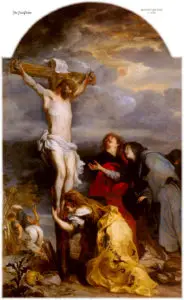
Luke tells us that Moses and Elijah we talking with Jesus about “his departure which he was about to accomplish at Jerusalem.”[19] When the disciples came down from the mountain, Jesus commanded them not to tell anyone about “the vision…until the Son of Man has risen from the dead.”[20] What then was the purpose of the vision? While the text doesn’t specifically say, Albert Barnes, in his respected commentary, offers a sound response based on the context:
This vision was designed particularly to confirm them in the truth that he was the Messiah. While he was with them it was unnecessary that they should relate what they had seen. When he was crucified they would need this evidence that he was the Christ. Then they were to use it. There were three witnesses of it as many as the law required (Deuteronomy 17:6; Hebrews 10:28), and the proof that he was the Messiah was clear…The sole design of this transfiguration was to convince them that he was the Christ; that he was greater than the greatest of the prophets; that he was the Son of God.[21] (emphasis added)
Matthew Henry, in his noted commentary, offers his worthy assessment:
Now the disciples beheld somewhat of Christ’s glory, as of the only begotten of the Father. It was intended to support their faith, when they would have to witness his crucifixion; and would give them an idea of the glory prepared for them, when changed by his power and made like him.[22] (emphasis added)
Thus, the vision of the Messiah, Moses and Elijah glorified, also serves as a picture of the coming kingdom and the promise that all who put their faith and trust in God’s human agent, Jesus the Christ, will likewise, be glorified.[23]
Despite the fact that many try to use the transfiguration as proof that Jesus is God, the text itself never identifies him as such. Furthermore, we’ve covered the numerous elements within the narrative that undermine such an interpretation and the Scriptures that disavow it. What’s more, there is a reasonable explanation for the transfiguration that can be drawn from the context itself. So whether it’s Jesus, Moses, Elijah, Stephen, angels or believers, a transfiguration, as luminous as it might be, is not proof of one’s deity.
[1] Mt. Hermon, not Mt. Tabor, is the likely location. See Burton Coffman’s Commentaries on the Bible, Matthew 17:1, for an explanation. https://www.studylight.org/commentaries/bcc/matthew-17.html
[2] Son of God or Son of the Living God is also a Messianic title. Follow link for more information.
[3] Matthew 16:13-20.
[4] metamorphoô, #3339, Thayer’s Greek Lexicon, accessed 7-10-19, https://biblehub.com/greek/3339.htm
[5] 2 Corinthians 3:7; Exodus 34:30.
[6] Luke 9:31.
[7] Joseph Benson, Benson’s Commentary on the New Testament, (New York, NY: T. Carlton & J. Porter, 1857) accessed online 7-14-19, https://biblehub.com/commentaries/benson/acts/6.htm
[8] Thayer’s, accessed 7-10-19, https://biblehub.com/greek/3339.htm
[9] John 20:11-12.
[10] Matthew 28:1-7.
[11] Luke 9:32.
[12] For example, John Calvin’s Commentary of the Bible (Matthew 17), StudyLight.org, or Burton Coffman’s Commentaries on the Bible (Matthew 17), StudyLight.org
[13] Mark 9:5-6; Luke 9:34.
[14] Exodus 34:30.
[15] Matthew 3:17.
[16] John 4:42; 1 John 4:14.
[17] Contrary to popular orthodoxy, John says the purpose for which he wrote his gospel was to so that we may believe Jesus is “the Christ, the Son of God” (John 20:31).
[18] Mark 9:5, etc.
[19] Luke 9:30-31.
[20] Matthew 17:9.
[21] Matthew 17, Barne’s Notes, Biblehub, accessed 7-11-19, https://biblehub.com/commentaries/barnes/matthew/17.htm
[22] Matthew 17, Matthew Henry’s Concise Commentary, Biblehub, accessed 7-11-19, https://biblehub.com/commentaries/mhc/matthew/17.htm
[23] 2 Corinthians 3:18; Hebrews 2:10; John 17:22.
